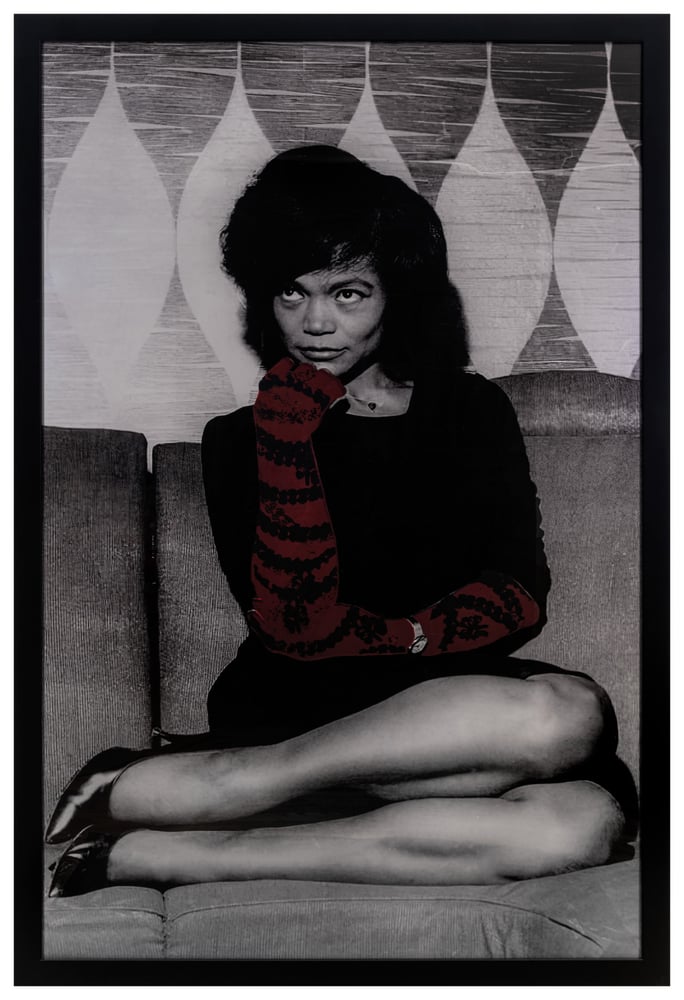
I am writing from New York, a city on an island united by its geographical and ideological compactness. Atlanta—the focus of the new exhibition The sea swept the sandcastles away. (To wake up in Atlanta!) at Manhattan’s MARCH—is not an island but a sprawling, land-locked archipelago, changing with the ebb and flow of industry and displacement that regularly destroys neighborhoods and creates new ones in their wake.
Exhibition curator Daniel Fuller states that Atlanta’s sprawling metropolis is reflected in the art scene: artists are scattered inside and outside the city perimeter, sharing few similarities—thematic, aesthetic, or otherwise. He leans into the paradoxical nature of this emerging art destination’s non-community, arguing that artists are unburdened by a defining “look” and allowed “an openness to make, to move, to be weird as hell.”[1] To celebrate this dissonance–to find a sense of unity in objects that, by Fuller’s own admission, resist such easy classification—is no easy feat, yet this wild grab-bag of Atlanta art succeeds in doing so, placing the scene’s fissures in plain sight.

Divided into two rooms, Fuller assembles a who’s-who of established and emerging artists. Elder statesmen such as Lonnie Holley are next to art-world stars-to-be like Erin Jane Nelson, whose delicate and colorful ceramic sculptures suggest pond amoeba carrying ancient knowledge of microscopic worlds. Nelson’s protozoan beauties hang beside ¡AFUERA! (2023), a Goya-esque fantasy landscape from the Buenos Aires-born, Atlanta-based María Korol. Only a few of the artists in The sea swept the sandcastles away. are preoccupied with visions of the city. Dianna Settles—a painter showcasing the radical possibilities of genre painting—has two works here: the first, Peris in Livery Presents The Gas Heart. The only and biggest fraud of the century in three parts (2023), shows a guerilla performance troupe at the High Museum of Art. Another painting in the show, entitled Beginning the Endless Séance (2023), is described by the artist as a memory of Atlanta’s slow yet defiant march towards liberation in the context of the Stop Cop City movement. Despite—perhaps in spite of—the lively figures in Settles’s work, both paintings suggest the tension at the core of contemporary Atlanta and its future: the progressive versus the neoliberal, the communal versus the institutional, the collective versus the individual.

Whereas the disparate stories in the first room combine to showcase Atlanta as a kaleidoscope of cultural memory and style, the second room feels more unmoored by the variations central to Fuller’s thesis. On one side of the room, Yanique Norman’s two large-scale works FLOUTUS Jackie (Pearly Heresies) and LLOUTUS Eartha (Gloved Hereditaments) (both 2023) are elegantly brutal eviscerations of American femininity crafted from black-and-white images of Jackie Kennedy and Eartha Kitt, while the bright colors and free-handed forms of Wihro Kim’s Cinder’s Offering (2023) populate another wall. All of these are individually strong pieces, but their intricacies get lost in conversation with one another—especially with the overwhelming presence of Antonio Darden’s S. Tenebris, 2023 (2023), a haunting meditation on systemic violence that feels as if it has its own gravitational pull in the space. The artistic merit of the works prevails, but the unruliness central to the exhibition’s raison d’etre challenges the entire show, often suggesting cacophony than a united–albeit tenuous–alliance of voices.
The sea swept the sandcastles away. is not an “Atlanta group show,” nor does it aim to be. Placing a scene as ever shifting and multifaceted into neat classification is a fool’s errand, as Fuller so keenly understands. As artists face the continued challenge of living in a city as strange, beautiful, and infuriating as Atlanta, let us give them the space to create without the boundaries imposed by a geographic context. This isn’t New York, after all.

[1] Daniel Fuller, accompanying exhibition essay for The sea swept the sandcastles away. (To wake up in Atlanta!), MARCH, New York.




